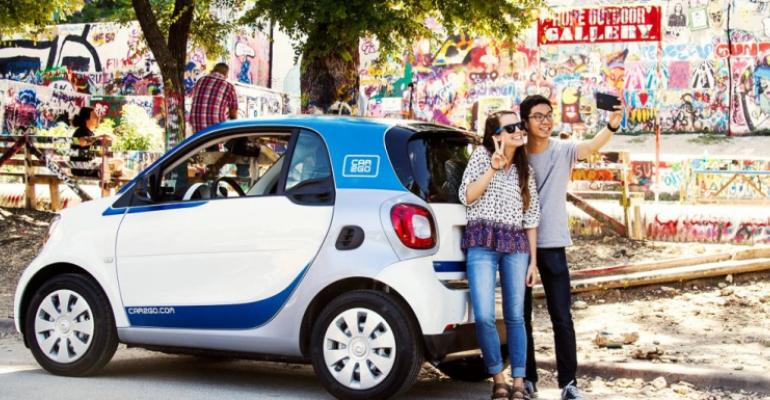The purchase of the carsharing service Share Now by the carmaker Stellantis, announced in May, put an end to a 14-year mobility saga that had as many twists and turns as a murder mystery and ultimately ended in failure.
The story began in 2008, when German automaker Daimler began testing its fledgling carsharing service car2go in the city of Ulm. An official launch followed in 2010. Within a year, car2go was active in 26 cities in Europe, North America and China, offering more than 14,000 Mercedes-Benz and Smart cars, and fully electric fleets were in four locations.
Another car sharing service linked to a German auto giant, DriveNow, began operating in Munich in 2011, as a joint venture between BMW and car rental company Sixt. Eventually, DriveNow expanded its service to 12 locations in Europe, with a fleet of some 6,500 BMW and MINI cars, as well as fully electric cars like the BMW i3.
Their parallel ventures were marked by a series of expansions and retrenchments that suggested both companies were either uncharacteristically naïve, overly ambitions or both. For example, in 2017, when DriveNow celebrated its one millionth customer, company CEO Nico Gabriel said: “Car sharing has been well and truly adopted as a smart solution for getting round our cities.” That same year, however, the service left San Francisco because it could not come to an agreement with the city about parking its fleet of 150 cars. A year earlier, car2go had left the Danish capital Copenhagen, having apparently misunderstood local authorities. The service had 8,500 members and 200 cars in Copenhagen at the time.
The venture had been compromised from the start after the Copenhagen City Council said that it would not collaborate with car2go because it granted special licenses for the service only to electric vehicles. Car2go argued that BEVs would not be as easy to share as fuel-driven vehicles – and was proven correct. “Unfortunately, the customer ramp-up did not meet our business expectations,” the company said in a statement.
In 2019, the two German rivals merged, forming Share Now as a joint venture. The move was followed by a series of retreats, with the service pulling out of North America just one week after the merger had been announced. The decision was based on “two complicated realities,” Daimler and BMW said at the time: the “volatile state of the global mobility industry” and the rising infrastructure costs of operating a car-sharing service in North America. “We are ultimately not in a position to commit to the level of investment necessary to make the North American market successful both in the near and long term,” the companies declared. This was a bewildering admission in light of the statement of a week earlier, when Daimler Board Chairman Dieter Zetsche said the companies were committing “more than €1 billion to establish a new player in… urban mobility.”
In May 2019, Daimler pulled its car2go service out of China, citing changes in the country’s “market environment and user needs.” Exactly three years later, Daimler and BMW threw in the towel. At the time, the service was operating in only 16 European cities.
An in-depth analysis of Share Now, published in 2021, by Aljoscha Groos and Zuzana Stoličná, economics professors at Comenius University in the Slovakian capital Bratislava, concluded that the venture had been doomed to fail from the start because its business model “does not appear to be profitable in the long term”. Groos and Stoličná cite several reasons, with the primary one being “the high vehicle costs owing to the use of premium vehicles”.
However, using low-cost vehicles, such as a Smart or Fiat, is also not viable. Even if their fixed costs are lower, “they can only achieve a significantly lower rental price,” the authors say, adding: “Owing to the existing competitors, companies are also forced to offer low prices in order not to lose customers.”
Because of the resulting “very low margins” per vehicle, it is essential for car-sharing services to gain as many customers as possible. However, this goal is inherently limited, the authors say, because of increasing competition and “a relatively fixed maximum value of possible customers. In contrast, there is more of a risk that existing customers will switch to other providers or take the closest car regardless of the provider.”
In the publication of its 2021 results, Share Now declared that it had “reached a total of 538,000 new users that year, increasing its number of new customers by 30% compared to last year.” Impressive as that sounds, a new user is very often a one-time user rather than a loyal customer. The statement made no mention of revenues or profits (or loss), and a few months later the sale to Stellantis was announced.




